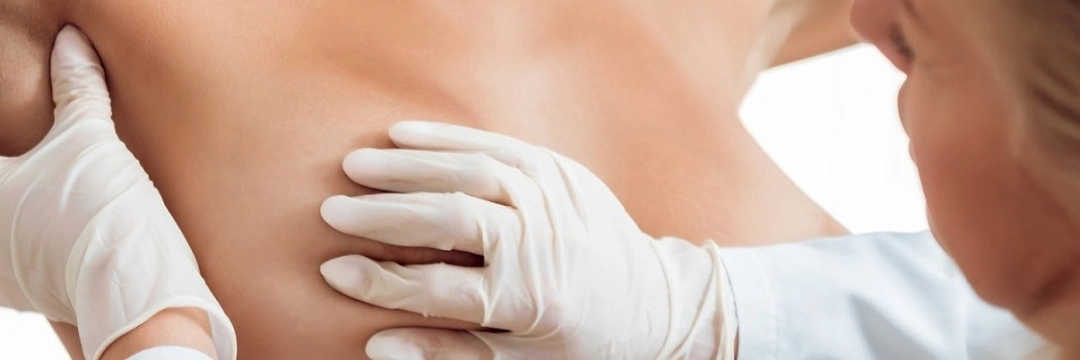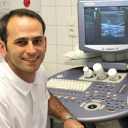
What is a breast care specialist?
A breast care specialist (or mastologist) deals with human mammary gland conditions, identifying, treating and monitoring breast diseases in both women and men.
In diagnostics, the breast care specialist’s tasks include:
- detection of malignant neoplasms at an early stage of development;
- differentiation of cancers from benign growths;
- monitoring of high-risk patients with precancerous lesions and a family history of breast carcinoma.
A breast care specialist is actually the same as an oncologist or general surgeon with a sub-specialty in breast issues.
What diseases does a breast specialist deal with?
The following conditions and diseases fall within the scope of the breast care specialist 's work:
- abnormal development of the mammary glands, underdevelopment;
- consequences of hormone disorders (mastopathies in women, breast enlargement in men);
- pre-cancerous conditions (various forms of cellular atypia);
- malignant neoplasms - glandular and nipple cancer, sarcoma, metastases of other tumors in the breast;
- benign neoplasms that do not lead to malignancy (lipomas, papillomas, fat necrobiosis);
- inflammatory diseases;
- restricted milk flow;
- the need for plastic and reconstructive breast interventions.
A doctor's consultation is required:
- while planning a pregnancy, if previously there were complicated gynaecological or obstetric issues (abortions, infertility, prolonged amenorrhoea);
- in the case of sexually transmitted infections, current and past;
- after a breast injury;
- in the case of liver diseases;
- in the case of systemic infectious diseases (tuberculosis, actinomycosis).
What signs tell you should see a doctor
The manifestations of abnormal processes in the breasts are multifaceted and not always specific. Symptoms that require the advice of a mastologist include:
- pain, swallowing and discomfort in the breasts;
- changes in the color, shape, or protrusion of the areola;
- changes in the color and structure of the skin of the mammary glands, dilated veins;
- edema, redness;
- lumps in the breast;
- fissures;
- abnormal discharge from the nipples in the form of blood, pus, serous fluid;
- pain in the axillae;
- changes in the shape and size of the glands;
- an evident asymmetry of the mammary glands;
- discomfort in the chest.
You should also see this specialist if you have injuries, hypothermia of the breasts or problems with breastfeeding.
How is the diagnosis made
As with any other doctor, diagnosis begins with obtaining the patient’s medical history and an initial examination. First, the breast care specialist will ask about the complaints and the timing of their manifestation. Then a detailed gynaecological anamnesis is obtained, including the family history. All this information is entered into the case record.
The breast care specialist then examines the breasts and assesses their appearance. After that the physician will palpate the breasts and regional lymph nodes. During the initial examination, fibrous inclusions that are characteristic of mastopathy and tumors are often detected. The mammologist prescribes additional tests and examinations. The most frequently recommended laboratory tests are: complete blood count, blood biochemistry, hormone panel, nipple discharge analyses.
Breast imaging studies include:
- Mammography is an X-ray examination of mammary glands. It is performed on day 5-12 of the menstrual cycle to avoid false positives and overdiagnosis. In amenorrhoea and menopause, the examination can be carried out on any days.
- Ultrasound examination of the mammary glands. It provides information on breast structure, its homogeneity, the presence of inclusions and their size. It is recommended especially in the case of dense breasts.
- MRI with contrast. The method is highly accurate, fast and reliable.
- Tomosynthesis is three-dimensional layer-by-layer imaging of the breasts.
- Radiological examination of the milk ducts.
If indicated (in the case of abnormal discharge, lumps, suspicious lesions confirmed by ultrasound or mammography), the doctor will recommend to have a biopsy.
Types of breast disease treatment
A breast care specialist identifies and treats defects in the structure of the gland, changes in its function, inflammatory processes, hormone disorders, benign and malignant neoplasms.
The doctor prescribes conservative treatment for diseases that are not related to malignant growth:
- in benign neoplasms (e.g. fibroadenomas);
- inflammations of the mammary gland (mastitis);
- focal mastopathies, which are lumps in the mammary gland.
If a malignant neoplasm is detected, a breast oncologist will recommend some of the following therapies:
- Surgery. Removal of the tumor with partial or complete removal of the affected breast, often including axillary lymph nodes.
- Drug therapy (chemotherapy, hormone treatment, targeted therapy, e.g. to prevent relapse).
- Radiation therapy. It is used to damage the cancer cells in the tumor and the affected areas, e.g. also to prevent recurrence.
- In inoperable breast cancer, palliative or symptomatic treatment is prescribed.
After treatment, breast care specialists are engaged in the rehabilitation. A breast care physician specializing in plastic surgery will repair the aesthetic damage resulting from surgery. The doctors with such a specialty also perform reconstructive surgeries to cure the consequences of injuries and, with the appropriate qualifications, often handle the entire spectrum of plastic and reconstructive surgery.
Conclusion
Women should follow a number of rules from puberty onwards to keep their mammary glands healthy:
- adequate hygiene;
- protection against ultraviolet light;
- avoiding trauma (harsh exfoliation, loofahs, proper selection of underwear);
- regular self-examination of the breasts.
Also, women should see a breast care specialist regularly, even in the absence of complaints, for preventive purposes.

Comments — 1
Musa mangwane
Very good